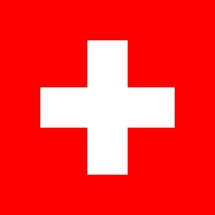
Please find below a chart for the upper bound of the target range for the libor rate, the Swiss National Bank (SNB) main interest rate. The chart begins in 2000.
The BoE conducts its monetary policy by setting a range of fluctuations for the 3-month libor rate in the CHF interbank market rate in Switzerland. In normal times, the amplitude of the range is 100bp (1%). In the chart pictured above, the line represents the upper bound of the range.
The SNB has for main mandate to maintain price stability, i.e. in SNB’s own words, a “rise in the national consumer price index (CPI) of less than 2% per annum”. The SNB has to meet this target over the medium term.
Since the end of 2008, in order to counter deflationary risks, the Swiss National Bank lowered to target range to 0%/0.75% and added that the 3-month libor should be close to 0.25%. Moreover, the SNB has launched a quantitative easing policy. Those measures are supposed to be temporary.
The BoE conducts its monetary policy by setting a range of fluctuations for the 3-month libor rate in the CHF interbank market rate in Switzerland. In normal times, the amplitude of the range is 100bp (1%). In the chart pictured above, the line represents the upper bound of the range.
The SNB has for main mandate to maintain price stability, i.e. in SNB’s own words, a “rise in the national consumer price index (CPI) of less than 2% per annum”. The SNB has to meet this target over the medium term.
Since the end of 2008, in order to counter deflationary risks, the Swiss National Bank lowered to target range to 0%/0.75% and added that the 3-month libor should be close to 0.25%. Moreover, the SNB has launched a quantitative easing policy. Those measures are supposed to be temporary.
SNB range for 3-month libor | Interest rate of the Swiss National Bank
You need to upgrade your Flash Player
 World GDP
World GDP



